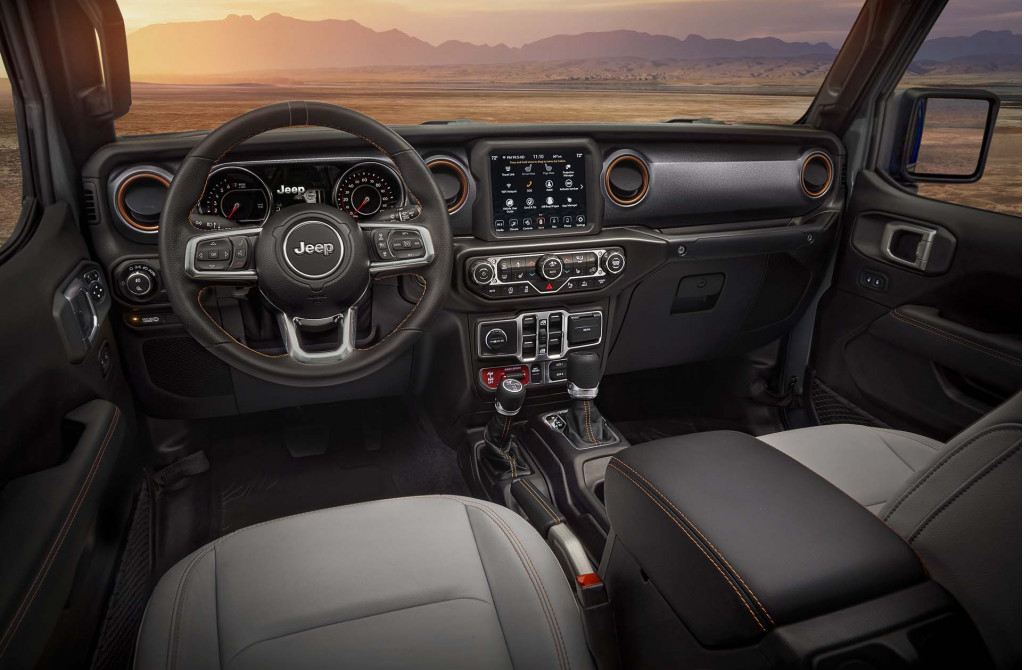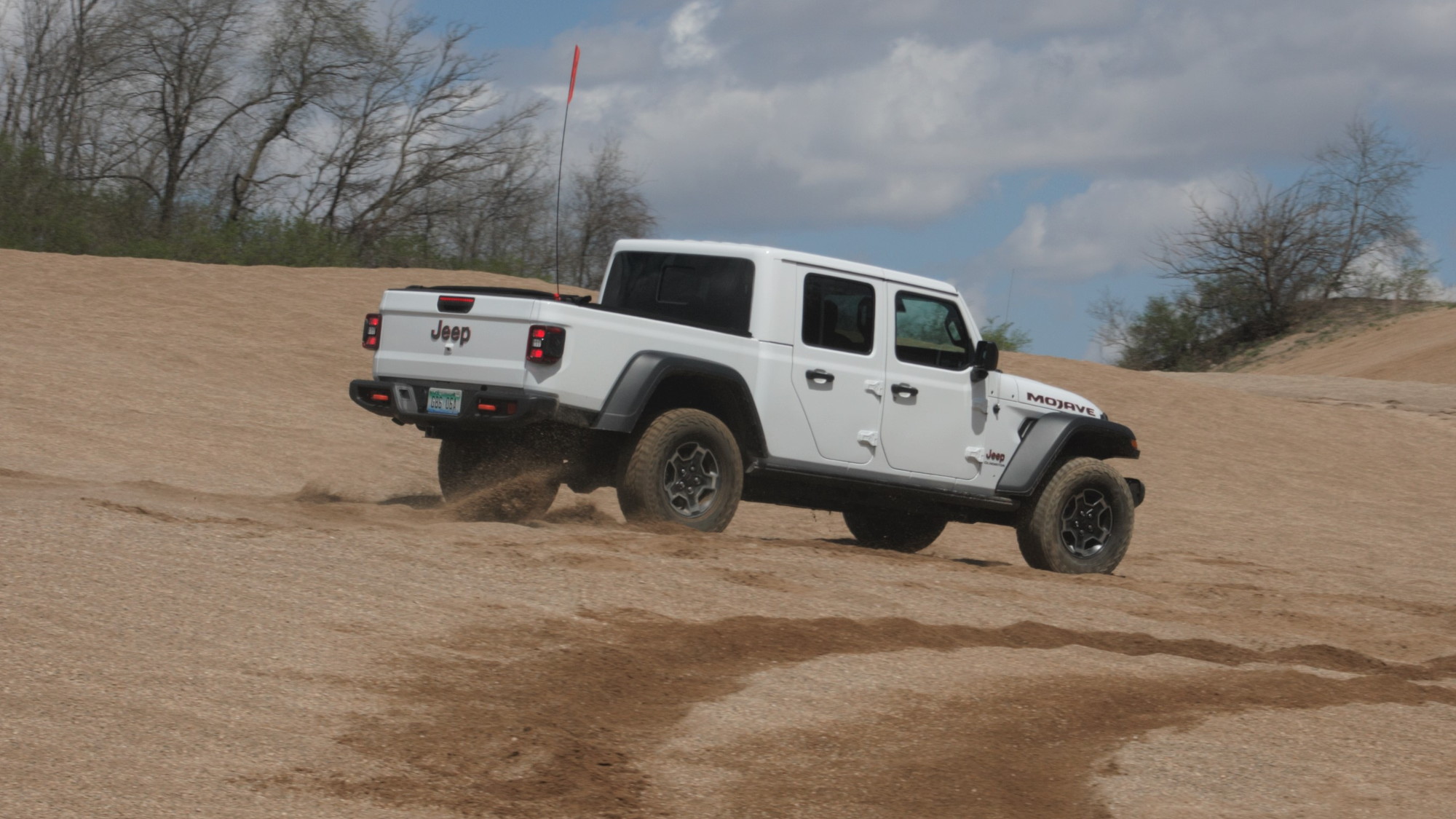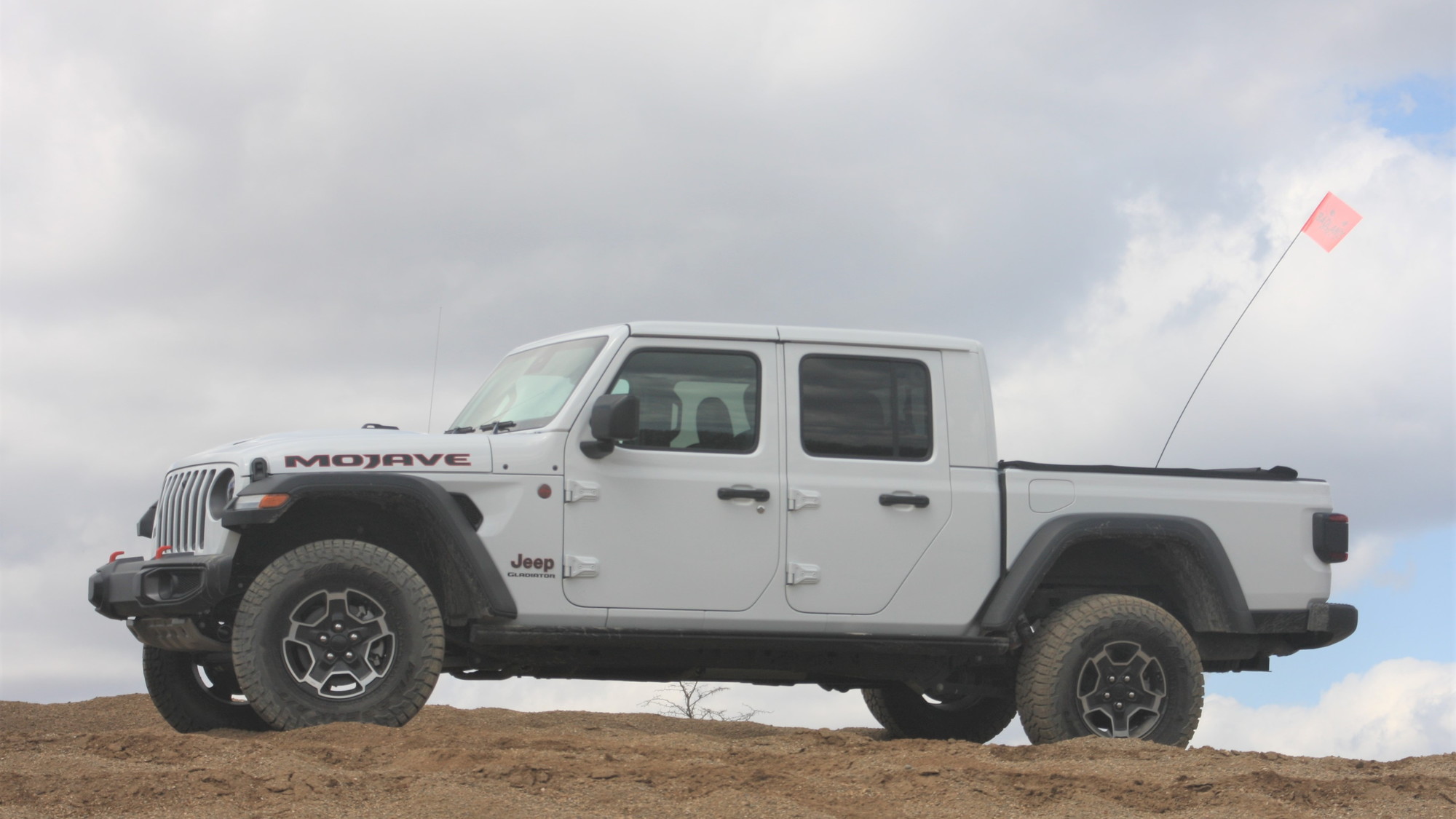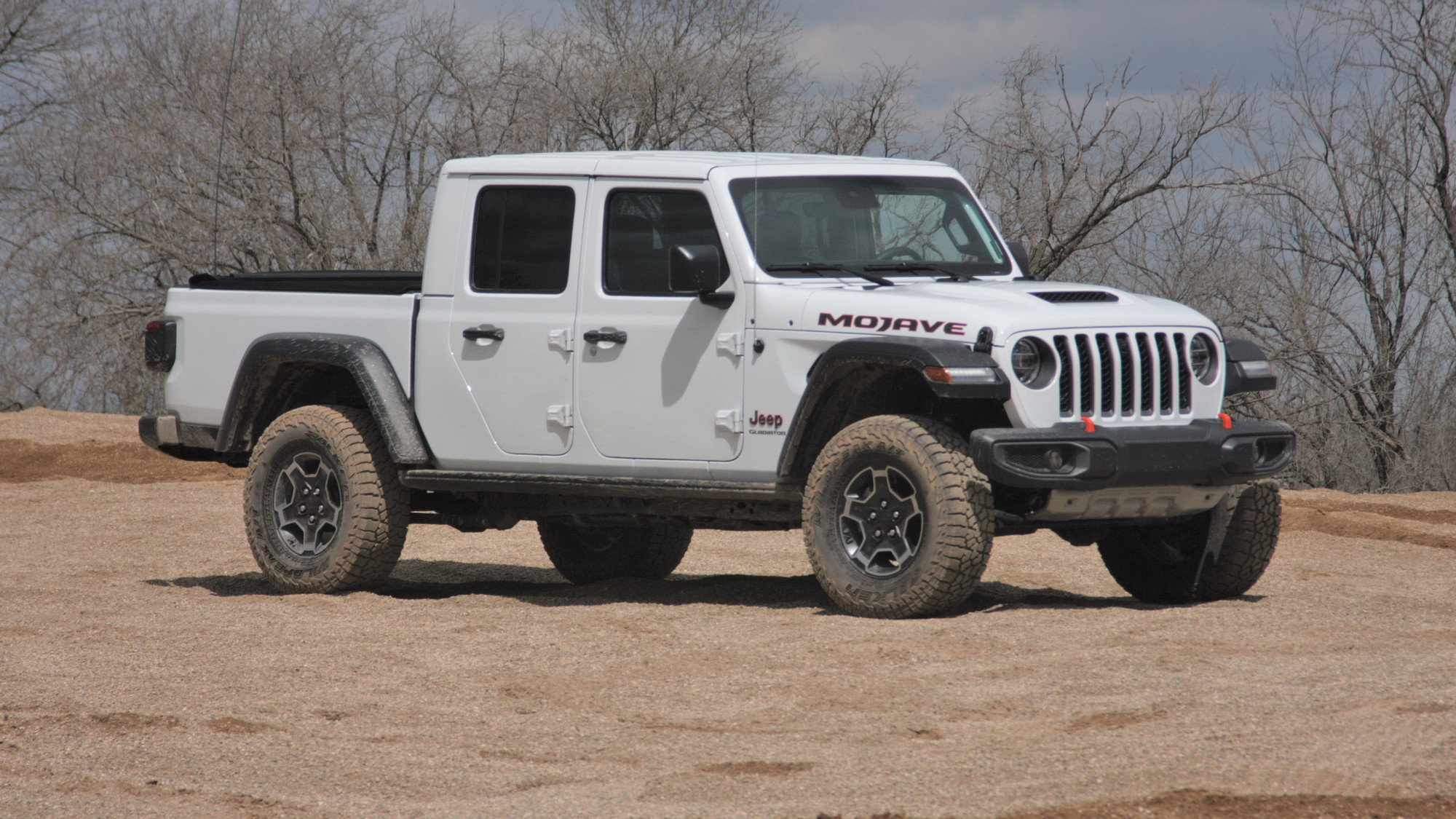If I stand in this sandy gravel, I sink about three inches. If I try to run, I look like Wile E. Coyote windmilling in place as he takes off after the Road Runner. But for the 2020 Jeep Gladiator Mojave, this terrain is a cakewalk.
The Gladiator Mojave is Jeep’s first “Desert Rated” product. As I’m about to learn, it's quarry rated, too, and it has the hardware and software to conquer the landscape at The Badlands Off-Road Park, a former gravel pit in Attica, Indiana.
Momentum is very important here because I’m not just running through sand, I’m climbing tall dunes. If I don’t carry enough speed, the truck will sink into this two parts sand/one part gravel mix, I’ll create deep ruts, and I’ll have to roll back down the hill to try again. With the four-wheel-drive system in 4Hi, I engage the Off-Road+ setting, lock the rear axle, then take a run at one of the dunes. It’s sink or swim.
The Gladiator Mojave’s 33-inch Falken Wildpeak A/T tires paddle through the sand, its Command Trac locking center differential sends power to all four wheels, the locking rear axle ensures both tires keep digging in to provide thrust, and the Off-Road+ button heightens throttle response, holds gears longer, and disables the traction control to keep the momentum going. The truck scrambles up to the top with confidence.

2020 Jeep Gladiator Mojave

2020 Jeep Gladiator Mojave

2020 Jeep Gladiator Mojave
Once I reach the top, a patch of ripples create bounding motions that bottom out the shocks. Jeep has an answer for that, too. The Mojave uses Fox 2.5-inch internal bypass shocks with position-sensitive damping that firms up near the end of shock travel to prevent jarring impacts. It also has Fox jounce bumpers that provide secondary damping when the shocks do bottom out. Full compression is still a violent event, but the dampers and jounce bumpers take some of the sting out of it, like getting hit with boxing gloves instead of bare knuckles. This setup also lets the truck go faster through the bumps because it controls the bounding motions better and sends less shock through the frame. Jeep ensures the dampers can handle hours of this abuse, too, by routing the shock fluid through an external reservoir to cool it so the damping capability doesn’t fade.
The Desert Rated badge required that Jeep prepare the Mojave for the high-speed off-roading a desert racing prerunner truck might endure as opposed to the low-speed rock crawling that the Gladiator Rubicon is built for. Jeep chose the Command Trac part-time four-wheel-drive system rather than the Rubicon’s Rock Trac because its less-aggressive 2.72:1 crawl ratio allows the truck to go faster in 4Lo than the Rubicon with its 4.0:1 crawl ratio. Engineers strengthened the Gladiator’s frame and installed the Rubicon’s stronger and wider Dana 44 axles front and rear. They also gave the truck an additional inch of ground clearance up front for a total of 11.6 inches and widened the track by a half inch to accommodate the Fox shocks. The Mojave doesn’t offer the Rubicon’s disconnecting front sway bars, which are also a boon to rock crawling.

2020 Jeep Gladiator Mojave

2020 Jeep Gladiator Mojave

2020 Jeep Gladiator Mojave
The extra inch of ground clearance gives the Gladiator Mojave an approach angle of 44.7 degrees, a breakover angle of 20.9 degrees, and a departure angle of 25.5 degrees. All but the breakover angle top the Ford F-150 Raptor and the approach angle is better than the Wrangler Rubicon’s, though the other angles can’t match the Wrangler’s due to the truck’s length and bed overhang. Still, those angles let it rip through sand, climb and descend hills, and ford water better than other Gladiators.
To test those capabilities, I kick up rooster tails of sand, run the Gladiator through deep puddles that shoot water onto the hood and roof, drive down a shallow stream, amble up sandstone rock formations, and climb and descend steep hills. The Mojave handles it all without banging the skid plates, grounding the nose or tail, or choking the engine with water. This is the truck to have when it’s time to hide in the bush from the revenuers.
Jeep offers a few features and options that aid the off-road experience as well. An available forward-facing trail camera ($595) helps drivers spot tall or sharp boulders and the Mopar heavy-duty rock sliders ($1,050) protect the rocker panels from protruding rocks. Jeep says the rock sliders also provide a step to get into this tall truck, but they’re set up high so they seem to get in the way more than help. Off-road pages in the instrument cluster and center screen also show the vehicle’s current degrees of pitch and roll, a spate of accessory gauges, and the current status of the steering angle and locking differentials.

2020 Jeep Gladiator Mojave

2020 Jeep Gladiator Mojave

2020 Jeep Gladiator Mojave
Road manners
While the changes Jeep makes to turn the Gladiator into a Mojave certainly help its off-road capability, they detract from its on-road manners, which were pretty compromised in the first place. The extra ride height makes getting in and out a chore, especially when the rock rails are caked with mud. The highway ride also becomes tedious due to more prevalent bounding motions caused by the ride height and the vague recirculating ball steering that requires constant corrections. However, the standard 17-inch wheels, wide sidewall tires, and long wheelbase do help the Mojave soak up potholes quite well.

2020 Jeep Gladiator Mojave

2020 Jeep Gladiator Mojave

2020 Jeep Gladiator Mojave
Outside in
Jeep outfits the Mojave’s interior features with thickly bolstered front seats that are wide and comfortable but flatter than ideal for best support. Like other Gladiators, the Mojave’s roof and doors can be removed and the windshield can fold forward to bring the outside in. The combination of its convertible body style and apocalypse-ready off-road capability give the Gladiator Mojave an undeniable appeal.
Unfortunately, that is tempered by a high cost of entry. The Mojave is the second most-expensive Gladiator with a starting price of $45,370. Even at that price, Jeep charges a pretty penny for some ubiquitous extras. The 8-speed automatic transmission is a $2,000 option, rear parking sensors cost $895, and adaptive cruise control with forward collision warnings and automatic emergency braking adds $795. Add in a few other desirable features like navigation with Alpine audio, leather upholstery, heated seats and steering wheel, a hardtop, a tonneau cover, and a spray-in bedliner, and you get a price of $62,410, which is what my tester costs. That has to be a new high for a mid-size pickup.
The price may be high, but the 2020 Jeep Gladiator Mojave is a ready-made ticket to adventure and now the fastest off-road Gladiator. Maybe if Wile E. Coyote could have ordered a Mojave from Acme Co. he could have caught that insidious Road Runner.






